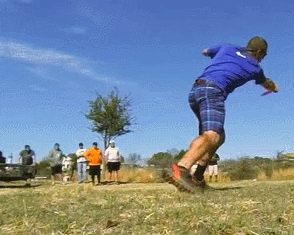RowingBoats
Eagle Member
- Joined
- Sep 6, 2020
- Messages
- 929
I have put off even attempting to learn an x-step for my entire time in this sport, but I am starting to wonder if I am approaching my limit from a stand-still (probably not, I'm not claiming any kind of perfection here).
After I started groking the mechanics, I noticed that most people who do an x-step or any kind of run-up were pretty obviously sabotaging themselves with the action, but the best players do it well, so I know it does something effective...but what exactly is it for?
My stand-still is not just a flat footed delivery, I move my feet, I often prepare for a throw with what I imagine is a silly looking yaba-daba-doo back and forth motion...so is the x-step just a rhythm thing that kind of accomplishes what I'm doing when I do this? Does moving that 5mph and adding that to the disc make an actual difference?
Im just curious if anyone wants to throw some words out about how they feel, or share resources that might convince/dissuade me from opening this can of worms.
After I started groking the mechanics, I noticed that most people who do an x-step or any kind of run-up were pretty obviously sabotaging themselves with the action, but the best players do it well, so I know it does something effective...but what exactly is it for?
My stand-still is not just a flat footed delivery, I move my feet, I often prepare for a throw with what I imagine is a silly looking yaba-daba-doo back and forth motion...so is the x-step just a rhythm thing that kind of accomplishes what I'm doing when I do this? Does moving that 5mph and adding that to the disc make an actual difference?
Im just curious if anyone wants to throw some words out about how they feel, or share resources that might convince/dissuade me from opening this can of worms.

